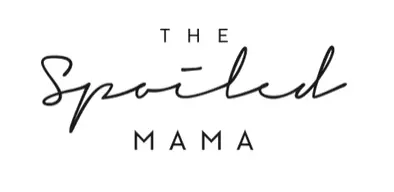Stretch marks during pregnancy are almost a given: pregnancy hormones soften the skin fibers, making them susceptible to stretching. Stretching occurs due to tension and inelasticity in the dermis, or middle layer of the skin. Stretch marks are tough to treat, widespread issue that affects around ninety percent of mothers.
Stretch Marks develop on the stomach, breasts and thighs as the pregnancy progresses, although their severity differs from person to person.
Stretch marks are primarily determined by genetics. Some moms experience them more severely, and some moms will not even have as much as a single stretch mark during pregnancy. If you happen to be in the group with susceptible genes or not, there are methods you can utilize to minimize the appearance of stretch marks.
Make Your Diet as Natural as Possible.
A diet consisting of natural, unprocessed foods is excellent for the body and is evident upon the skin. Eating lots of fruits, vegetables, pulses, nuts, legumes impart precious vitamins , minerals, phytonutrients, fiber, and a vast assortment of vital macro and micronutrients. Eating junk food due to cravings, such as saltines when morning sickness strikes and a tub of ice cream when you're feeling out of sorts, might appease your longings but also means that our skin will suffer as a direct consequence.
Control Your Weight
One of the most common causes of stretch marks is rapid weight change within a short period of time. Gaining a lot of weight relatively quickly puts a lot of pressure on the skin, which expands to carry the increased mass. A pregnant woman's belly will grow to accommodate the growing child. We cannot rule out weight gain in pregnancy , but it can be kept to a bare minimum, thus giving the person a fighting chance of staving off stretch marks.
The Importance of Gelatin
If you're vegan or vegetarian, this might not be for you, but if your diet is omnivorous, you should include gelatin in your food. If you think about it, our ancestors ate the entire animal, from nose to tail; nothing was allowed to waste. By doing so, they got the full spectrum of amino acids their bodies needed. Amino acids are what support collagen and skin growth or regeneration. A great way to introduce gelatin into your diet is to drink bone broth or chicken noodle soup. If soups do not excite you, then you can get organic grass-fed gelatin powders. You might add this to smoothies or shakes or make homemade jello. Gelatin is high in two amino acids, Glycine and Proline, the building blocks of collagen.
Ensure You Are Getting Enough Vitamins
You want to particularly hone in on vitamins A, C, and E because they're essential nutrients that stimulate collagen production. Vitamin A is a much harder nutrient to get into our diets these days. If you can get Retinol, the animal-based vitamin A, it is incredibly potent for the skin; sources for natural Retinol include egg yolk, goat cheese, or wild-caught salmon.
Stay Hydrated
This is probably not the first time you'll be hearing that-- the saying itself might even be cliched; however, it bears repeating -- drink water, lots of it. Your water intake provides your skin with the hydration it needs to be healthy. When skin cells have an abundant supply of water, they are better able to repair themselves. The National Institute of Health recommends that pregnant women drink at least ten cups of water but no more than 15 cups per day. There exists a caveat to this advice: if you are retaining fluids, your physician might advise you to reduce your fluid intake.
Keep Your Skin Moisturized
Moisture is a crucial component of a proper pregnancy skincare regimen. Staying moisturized keeps your skin bright, smooth, and shiny. There aren't any moisturizers or creams that will outrightly prevent stretch marks, but staying moisturized can help reduce the risk in some people.
- Nut butter (cocoa butter, jojoba, or shea)
- Vitamins A & E
- Hyaluronic acid
- Rosehip, coconut, or argan oil
- Aloe vera
- Natural peptides found in foods such as eggs, nuts, shellfish
Topical Prevention of Stretch Marks: Keep Skin in Great Condition with Body Creams and Serums
Topical creams may or may not wholly prevent stretch marks, but there is evidence that they can unquestionably delay onset, severity, and progression. The most significant benefit of topical creams is that they stop the progression from stage 1 stretching — the pinkish-hue stretch marks — to stage three when they mature and become permanent.
Incorporate these practices into your pregnancy skincare routine to have a great chance of escaping stretch marks:
- Use Moisturizing Soap to Wash Your Belly: It is imperative to use soaps that do not dry out the skin after a wash. For instance, the shower gels are excellent for pregnant moms due to their silky smooth composition that helps exfoliate the skin without abrasion, while a soap such as Irish Spring, notable for its astringent properties, will not aid in retaining skin moisture.
- Exfoliating Bath Gloves: These body exfoliating gloves are the perfect addition to your daily shower and bath time ritual. Use your bath gloves to clean your belly and breasts -- avoid stressing the skin more than necessary.
-
Tummy Massage: The use of Tummy Butter , belly oil , and other specialized topical formulations alongside a gentle massage routine effectively prevent stretch marks. Massage exercises the immediate area leading to improved blood flow and high elasticity.
